Best fast-growing shrubs: 10 quick ways to add impact to your yard
If you're looking for fast-growing shrubs to quickly fill your yard with color, texture and interest, these vigorous growers will fit the bill
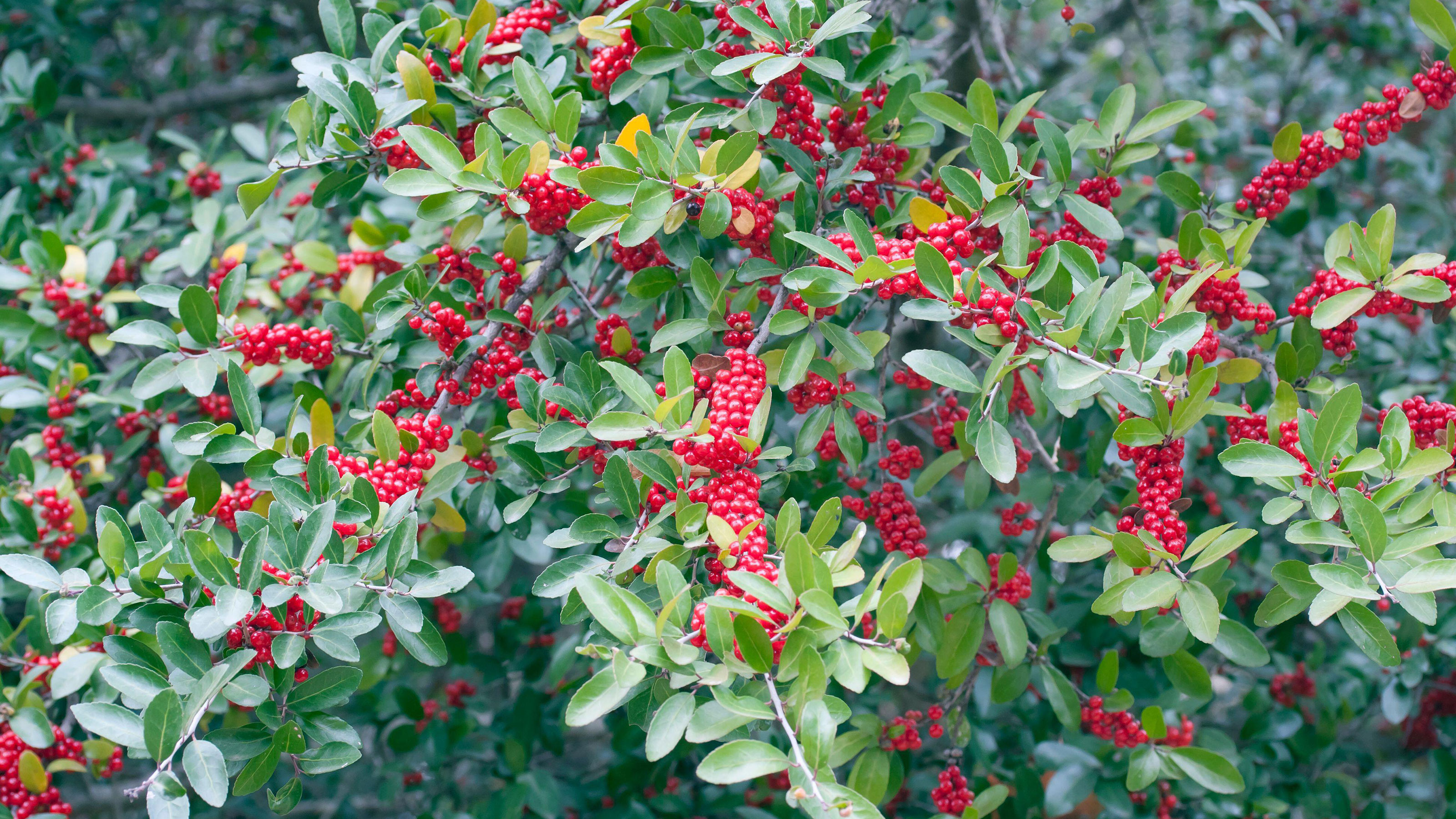

None of us like waiting for our garden to mature, so fast-growing shrubs can be a good option for your planting scheme. After all, we do not want to be looking at the spaces between our plants, we need the plants themselves to make an impact as soon as possible.
A great way to achieve this is to choose fast-growing varieties that get off to a flying start, grow vigorously and make a valuable contribution to the garden as soon as possible.
Shrubs are the backbone of any garden and fast-growing shrubs have many valuable features. They can look good quickly, whether in terms of the their leaves, flowers, or berries. They can also create privacy, shielding your seating area from prying eyes and deadening the noise from next door.
Shelter from chilly winds is also important and the right shrubs will provide a protective barrier, extending the sitting out season so you can make even better use of your outdoor spaces.
Of course, one thing to keep in mind is that just like fast-growing trees, these vigorous shrubs do not always slow down when they reach the height you need. Some will never stop growing and these can end up causing more trouble than they are worth. But, after a racing start, many slow down and develop a natural elegance as they mature.
Enjoy a shortcut to a beautiful yard with these 10 fast-growing shrubs
Whether you want fast-growing plants to fill a gap in your garden borders or suitable options for creating privacy from neighboring properties quickly, our favorite fast-growing shrubs are more than up to the task in hand.
1. Butterfly bush ‘Black Knight’ (Buddleja ‘Black Knight’)
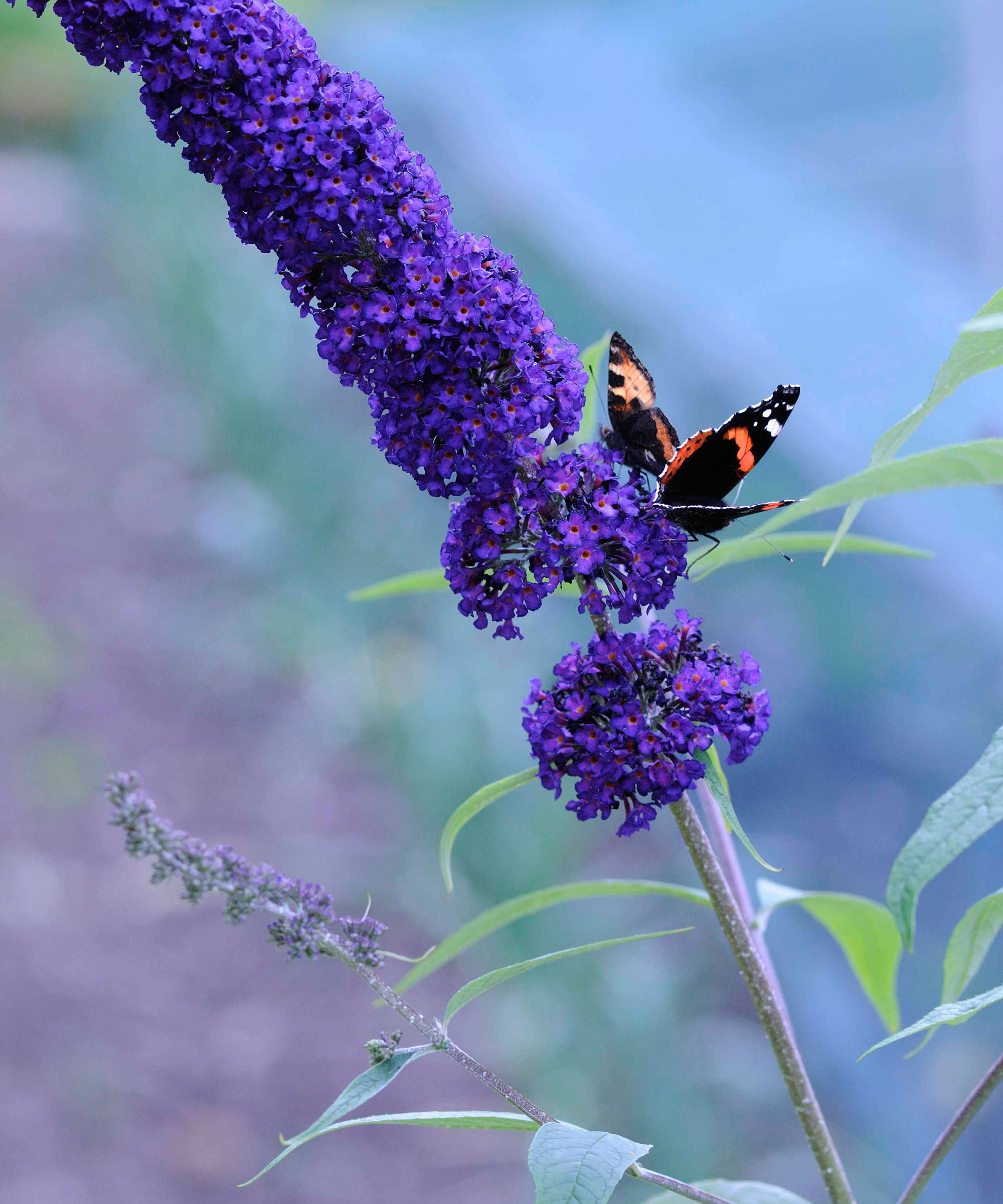
- Hardiness: USDA 5 (UK H6)
- Rate of growth: 3-5ft (90cm-1.5m) per year
- Height after 10 years: 10-14ft (3-4m)
- Spread after 10 years: 10-14ft (3-4m)
This dramatic, summer-flowering deciduous shrub features long, pointed spikes packed with tiny fragrant flowers in a colors from deep purple and dark red through lavender and pink shades to white. ‘Black Knight’ is deepest purple.
It's one of the best plants for pollinators as the flowers are packed with nectar and pollen, and are much appreciated by bees and other insects as well as hummingbirds.
Plant in full sun in any reasonable soil. Prune hard in spring to stimulate strong growth and the largest flowers. Do bear in mind, however, that it can be an invasive plant in warmer zones.
- Buy your butterfly bush from The Home Depot in the US, or from Crocus in the UK
2. American hazelnut (Corylus americana)
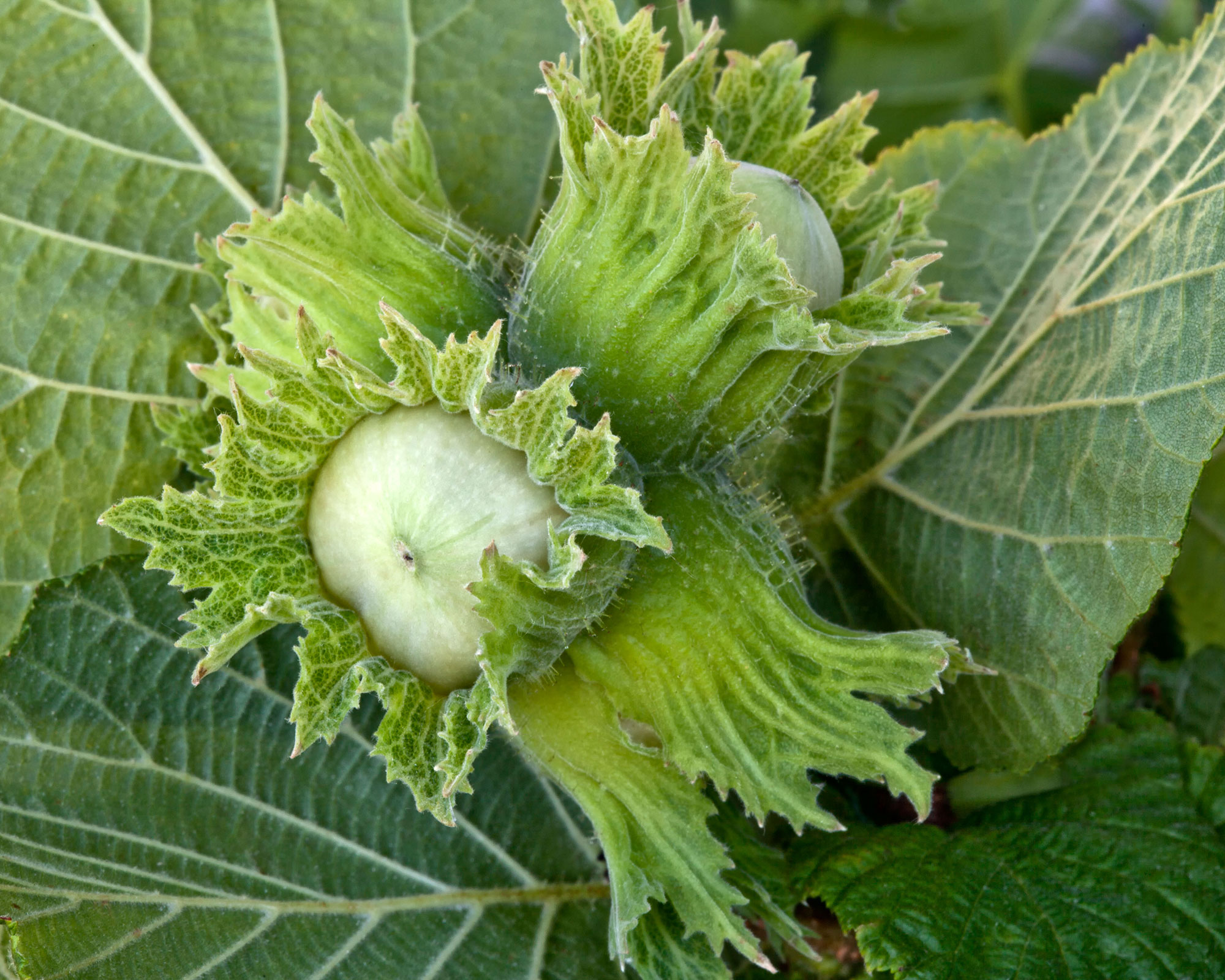
- Hardiness: USDA 4 (UK H6)
- Rate of growth: 2-3ft (60-90cm) per year
- Height after 10 years: 15-18ft (4.5-5.5m)
- Spread after 10 years: 10-12ft (3-3.5m)
This valuable deciduous native shrub has ornamental qualities, is edible and provides plenty of benefits for wildlife gardens.
The flat, fan-like sprays of twigs carry rounded, almost heart-shaped leaves that turn buttery in fall. In early spring, 3in (7.5cm) yellow catkins sway in the breeze releasing clouds of pollen followed by edible nuts.
The many varieties of the similar European hazel, Corylus avellana, are also worth considering.
Best in light shade and happy in any reasonable soil that is neither parched nor waterlogged. Needs little pruning, so is a good choice if you're a fan of low-maintenance shrubs too.
- Buy your American hazelnut from Fastgrowingtrees.com in the US, or from Primrose in the UK
3. ‘Grace’ smoke tree (Cotinus ‘Grace’)
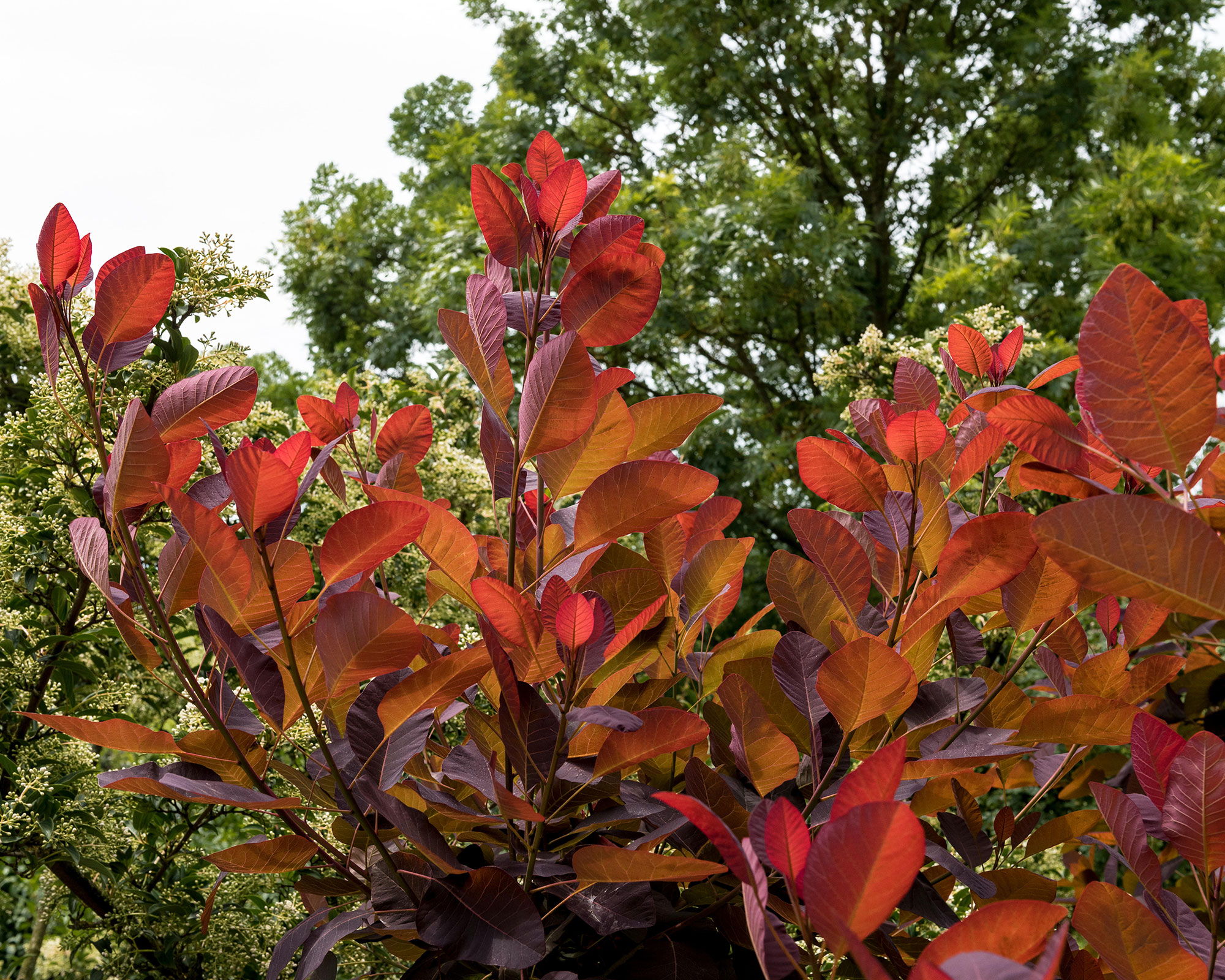
- Hardiness: USDA 4 (UK H5)
- Rate of growth: 2-3ft (60-90cm) per year
- Height after 10 years: 16-23ft (5-6.5m)
- Spread after 10 years: 16-23ft (5-6.5m)
A tall, strong-growing deciduous shrub with large, rounded leaves in soft reddish purple becoming richer as fall approaches.
In summer, long lasting, fluffy, silvery pinkish-purple clouds of flowers appear like pink smoke then, in fall, the whole tree turns to vivid orange scarlet before the leaves drop.
Can be left unpruned or, to encourage long straight branches and larger leaves, cut back to three or four buds from the base as it starts to grow in spring.
- Buy your Grace smoke tree from The Home Depot in the US, or from Crocus in the UK
4. Ebbing's silverberry (Elaeagnus x ebbingei)
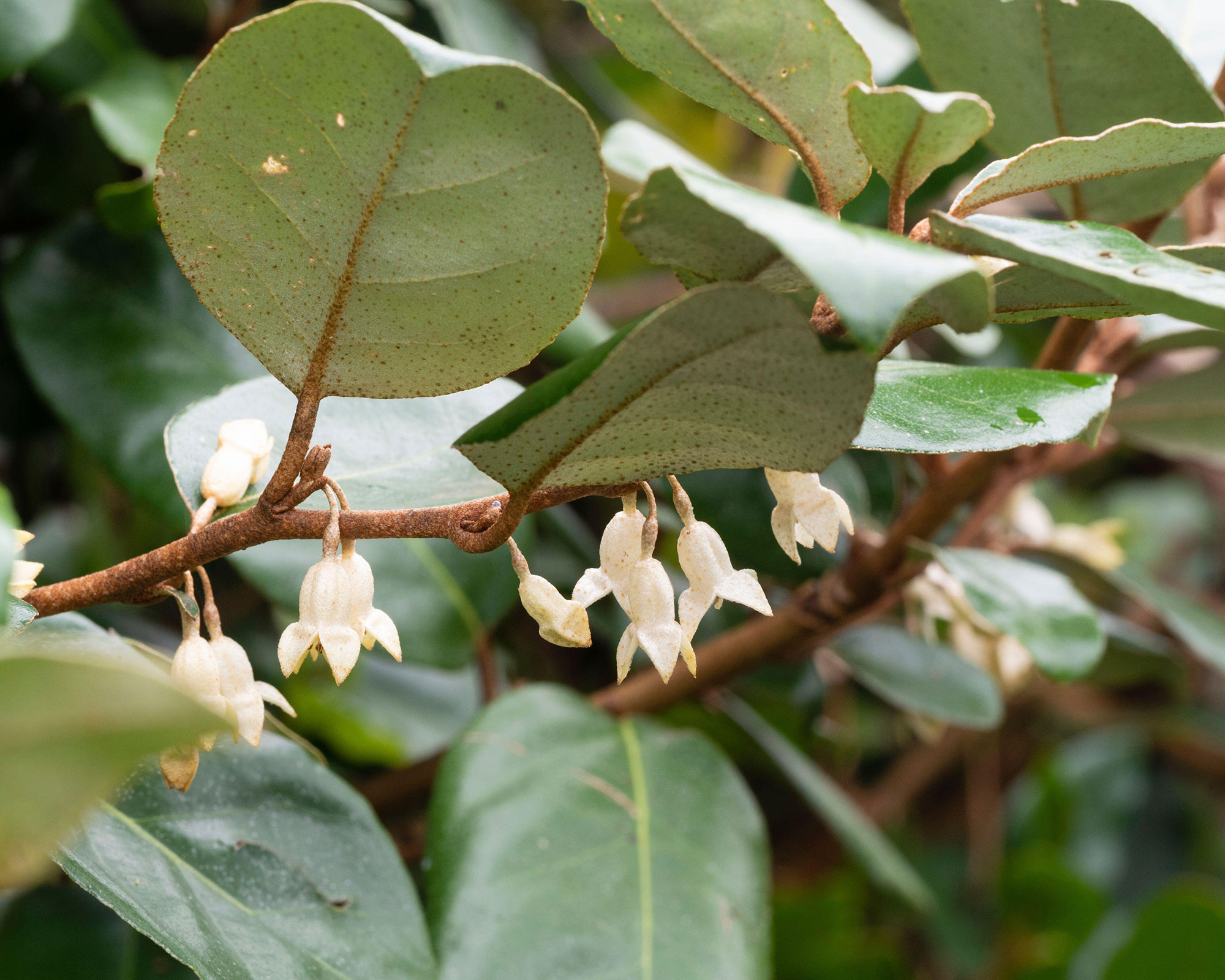
- Hardiness: USDA 7 (UK H5)
- Rate of growth: 2-3ft (60-90cm) per year
- Height after 10 years: 10-15ft (3-4.5m)
- Spread after 10 years: 10-15ft (3-4.5m)
This adaptable fast-growing shrub has large, pointed, evergreen foliage that is silvered on the undersides. In fall, clusters of small, white, well-scented flowers open at the leaf joints and are followed in spring by small orange berries.
A number of attractive variegated forms are available including ‘Gilt Edge’, with yellow margins to the leaves.
If you're considering ways of landscaping with evergreens, this is ideal as a fast-growing shelter belt, even in coastal areas, and makes an attractive specimen with fragrance at a valuable time of year. It is best left unpruned.
5. Lynwood forsythia (Forsythia × intermedia ‘Lynwood’)
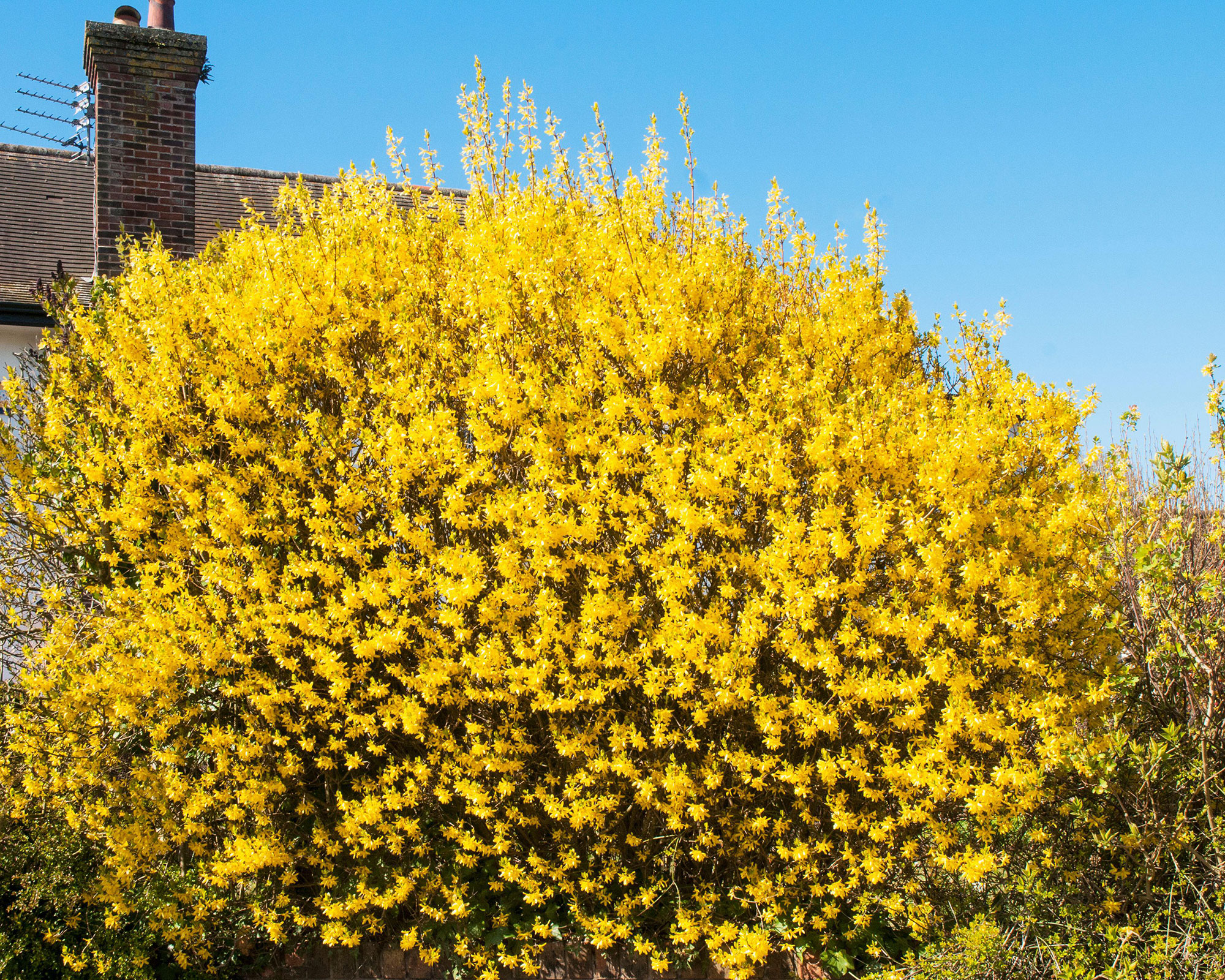
- Hardiness: USDA 5 (UK H5)
- Rate of growth: 2-3ft (60-90cm) per year
- Height after 10 years: 10-12ft (3-3.5m)
- Spread after 10 years: 10-12ft (3-3.5m)
Upright, well-branched growth is lined with deep buttercup yellow flowers in late winter making this a dramatic, brightly colorful deciduous shrub with almost the largest flowers of all forsythias and especially broad petals.
‘Beatrix Farrand’ has even larger flowers, but impostors are sometimes sold under that name.
Howard S. Irvin, in America’s Garden Book, points out: 'Lynwood has the advantage of coming into bloom just late enough in most areas to escape severe frost.'
Forsythia will grow best in full sun and is happy in any reasonable soil. When it comes to pruning forsythia, it should be done immediately after flowering by cutting the shoots that have flowered almost to their base.
- Buy your lynwood forsythia from Fastgrowingtrees.com in the US, or from Gardening Express in the UK
6. Yaupon holly (Ilex vomitoria)
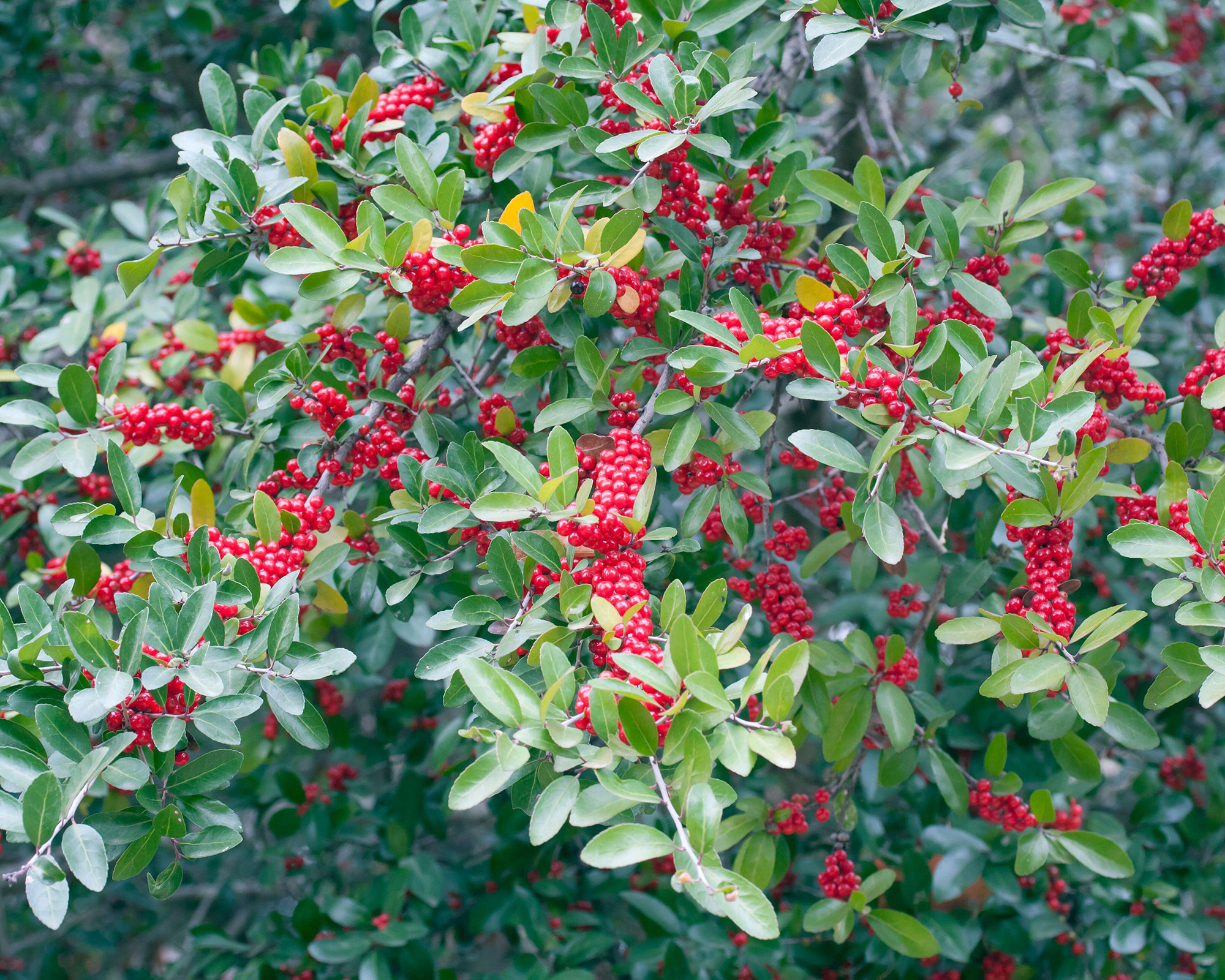
- Hardiness: USDA 7 (UK H5)
- Rate of growth: 2-3ft (60-90cm) per year
- Height after 10 years: 15-20ft (4.5-6m)
- Spread after 10 years: 15-20ft (4.5-6m)
This fast-growing shrub features large, dark, glossy green evergreen foliage that is usually prettily tinted in purple when it first opens. The small white flowers are followed by long lasting scarlet berries.
This is one of only two North American native plants that naturally produce caffeine. Vicki Shufer of the American Botanical Council reports: 'Yaupon has the potential to become the next popular caffeinated beverage, despite its scientific name and its historical use as an emetic.'
Happy in a little shade, and more tolerant of wet soil types than most shrubs. Unlike many hollies, male and female flowers appear on the same plant.
- Buy your yaupon holly from Fastgrowingplants.com in the US
7. ‘Red Robin’ photinia (Photinia ‘Red Robin’)
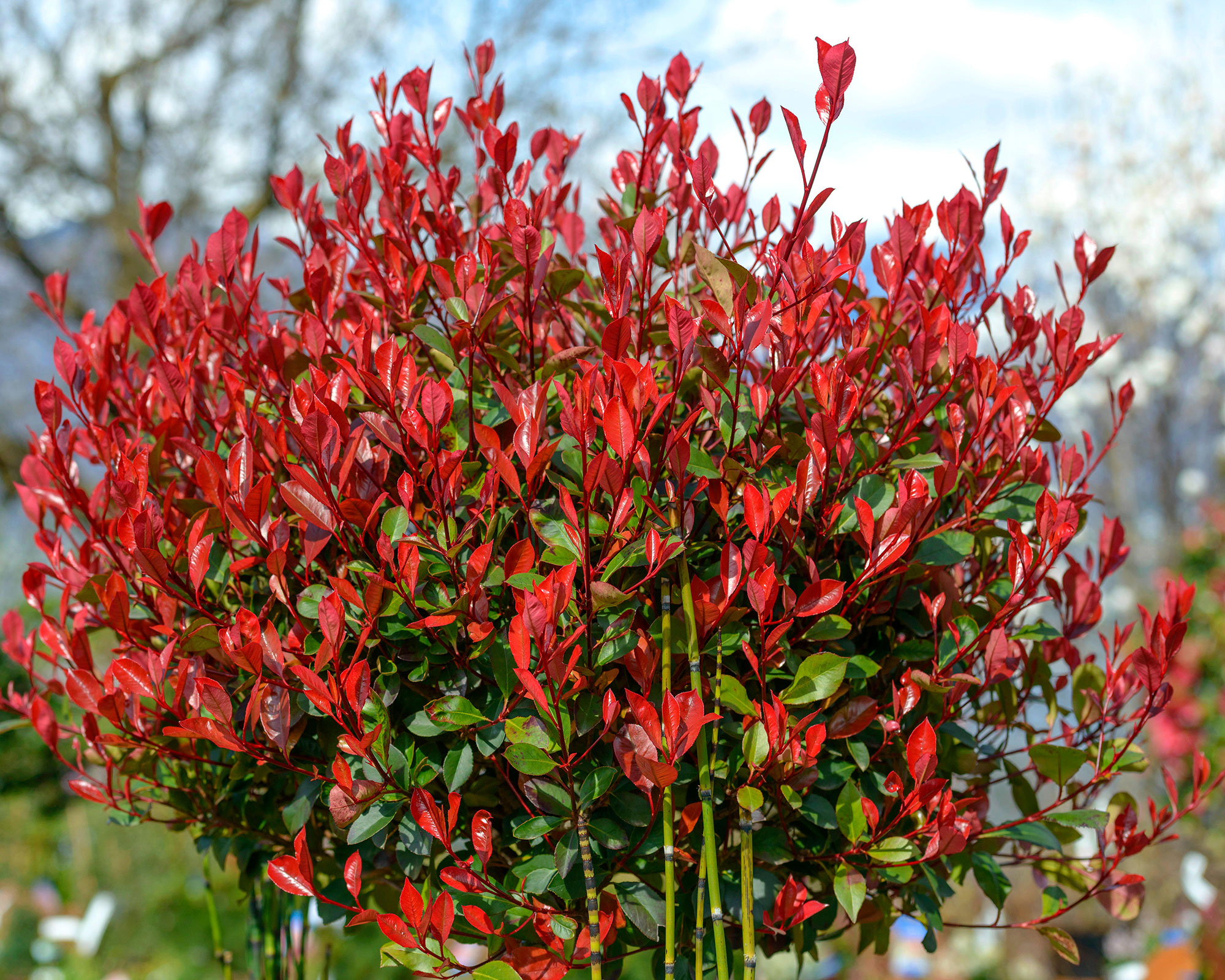
- Hardiness: USDA 7 (UK H5)
- Rate of growth: 2-3ft (60-90cm) per year, depending on pruning
- Height after 10 years: 16-23ft (5-7m)
- Spread after 10 years: 16-23ft (5-7m)
A dramatic evergreen shrub grown for two distinct features. First, the new shoots are brilliant red in color, surpassing most flowers in their brilliance, and through the summer the new growth opens with this same vivid coloring, slowly fading to glossy green.
Also, in spring, broad flat heads of white flowers open on the growth made the previous year.
It will grow best in full sun, and is tolerant of a range of soils, ‘Red Robin’ makes a superb option for garden screening and, if trimmed after flowering, more bright red shoots will be encouraged to continue the display.
- Buy your red robin photinia from Garden Goods Direct in the US, or from Gardening Express in the UK
8. Diablo ninebark (Physocarpus Diablo (‘Monlo’))
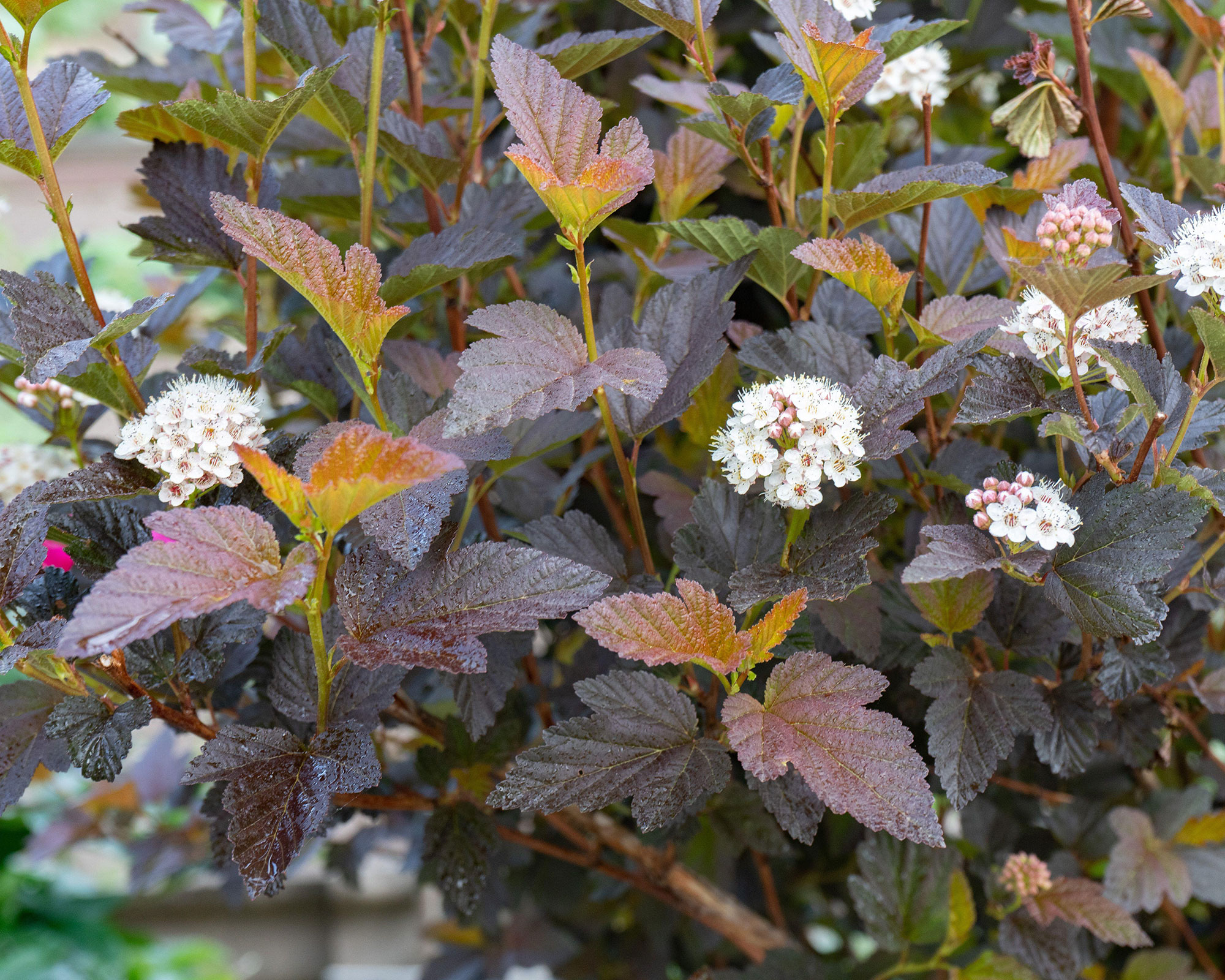
- Hardiness: USDA 3 (UK H7)
- Rate of growth: 2-3ft (60-90cm) per year
- Height after 10 years: 10-15 ft (3-4.5m)
- Spread after 10 years: 15-20ft (4.5-6m)
This dark-leaved form of a widespread North American native deciduous shrub is one of the most frost hardy of all fast-growing shrubs.
Developing into a specimen that is wider than high, the foliage opens coppery green then quickly matures to dark purple-bronze. In spring, clusters of small white flowers line the branches, followed by black berries.
Happy in full sun or partial shade, Diablo makes a fine companion plant for heirloom roses. Also happy in wet soils. Can be pruned regularly after flowering or allowed to develop its graceful arching branches.
- Buy your diablo ninebark from Garden Goods Direct in the US, or from Crocus in the UK
9. Skip Laurel (Prunus laurocerasus ‘Schipkaensis')
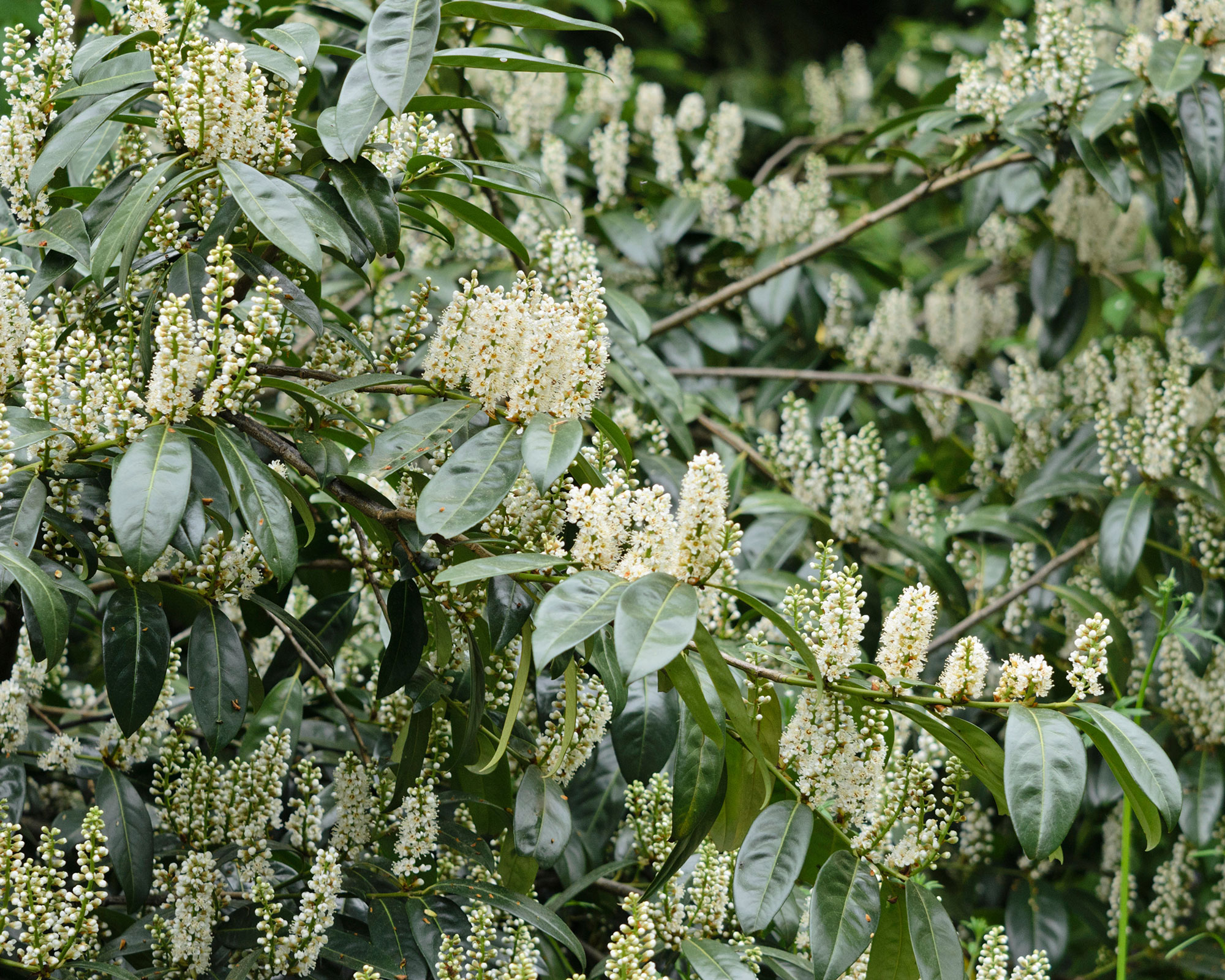
- Hardiness: USDA 6 (UK H5)
- Rate of growth: 2-3ft (60-90cm) per year
- Height after 10 years: 15-18ft (4.5-5.5m)
- Spread after 10 years: 20-25ft (6-7.5m)
Most standard varieties of cherry laurel are strong growing and reliable, but many are dwarf. ‘Schipkaensis' is taller, more vigorous and is also noticeably more frost hardy than other varieties.
Its dark and glossy leaves are narrower than most and, with its upright white candles of scented spring flowers followed by black berries, it appeals across the seasons.
'Its great value is its extreme hardiness,' reports Bean's Trees and Shrubs Hardy in the British Isles. 'It will withstand winters where no cherry laurel has been known to do so before.'
It's also one of the top fast-growing shrubs for quickly making a good screen in light shade or partial shade, so worth considering if you're wanting to improve your garden privacy.
- Buy your skip Laurel from Garden Goods Direct in the US, or from Gardening Express in the UK
10. Black Beauty elder (Sambucus Black Beauty (‘Gerda’))
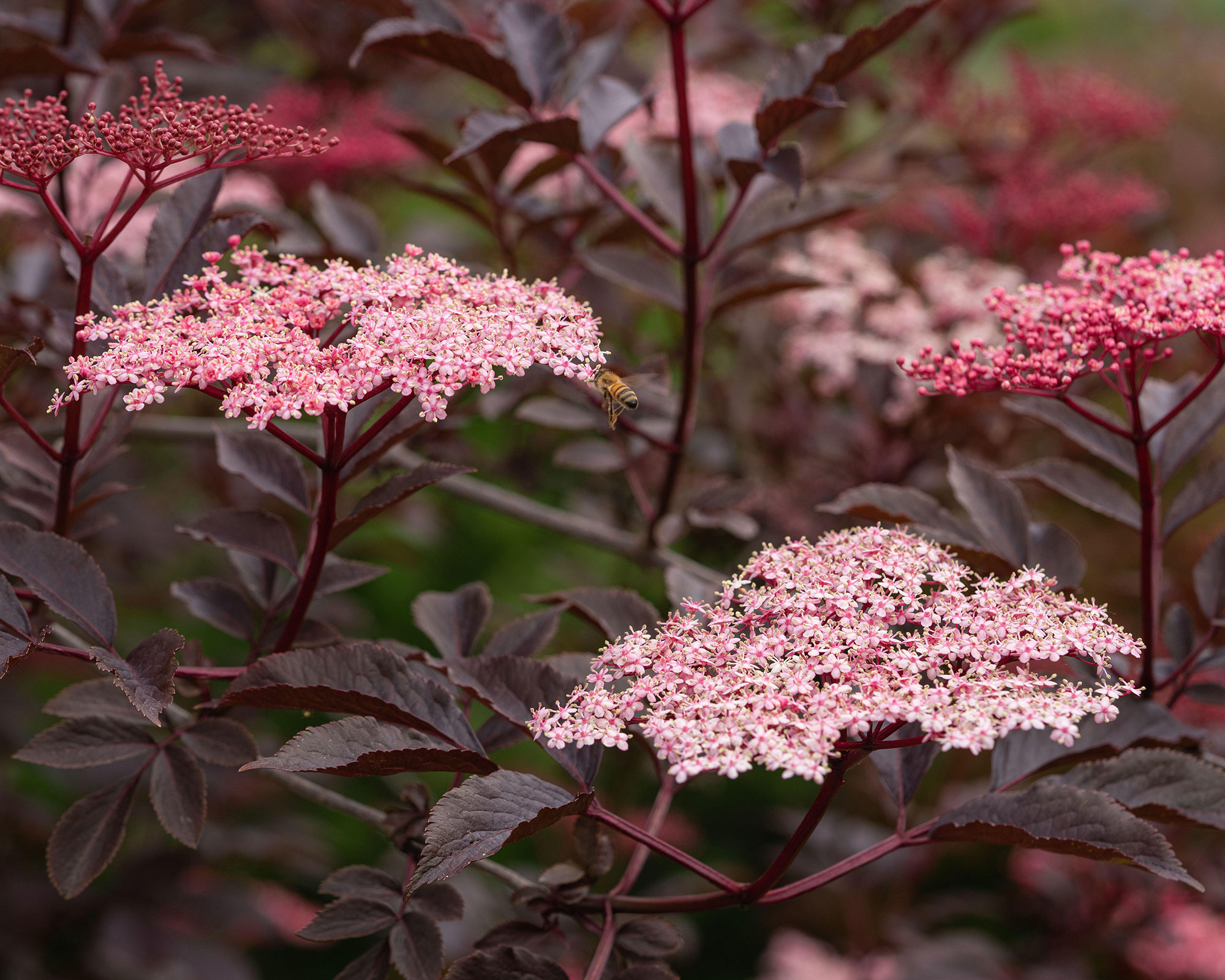
- Hardiness: USDA 4 (UK H6)
- Rate of growth: 2-4ft (60-90cm) per year, depending on pruning
- Height after 10 years: 12-15ft (3.5-4.5m)
- Spread after 10 years: 12-15ft (3.5-4.5m)
If you're landscaping with shrubs, this tough, reliable, and adaptable deciduous shrub is one to consider. It features bold, almost black foliage, and the broad flower heads up to 9in (23cm) across are packed with tiny pink florets that not only create a beautiful effect but make refreshing summer drinks.
The flowers are followed by huge drooping clusters of black berries much appreciated by birds. A pretty cut-leaved version of this plant, Black Place (‘Eva’), is also often seen.
Happy in any reasonable soil in sun or partial shade. When pruning shrubs of this variety, it should be done in winter by removing one or two of the oldest branches at the base.
- Buy your black beauty elder from The Home Depot in the US, or from Crocus in the UK
How to help fast-growing shrubs make an impact
You can speed up the growth of shrubs that naturally grow quickly by giving them a little extra care and attention. Before planting, amend the soil with garden compost or a soil improving planting mix. The day before planting, water the plant in its pot, adding some liquid feed to the water.
After planting, feed your new plant again then it's worth mulching with bark or another weed-free organic material to retain moisture. In windy situations, erect a temporary windbreak. Make sure your new shrubs do not dry out until well established.
What are good fast-growing shrubs for shade?
There are some fine native shrubs that grow strongly in shade and these include the deciduous and wildlife friendly American hazelnut (Corylus americana), the evergreen skip laurel (Prunus laurocerasus ‘Schipkaensis') as well as the native Rhododendron maximum. Conifers including hemlock (Tsuga canadensis) and yew (Taxus baccata) also grow strongly in shade.
It is important to remember that many shade loving plants that are naturally fast growing grow slowly because their roots are in competition with those of shade trees. Be sure to irrigate and fertilize your newly planted shade shrubs to help them grow vigorously.
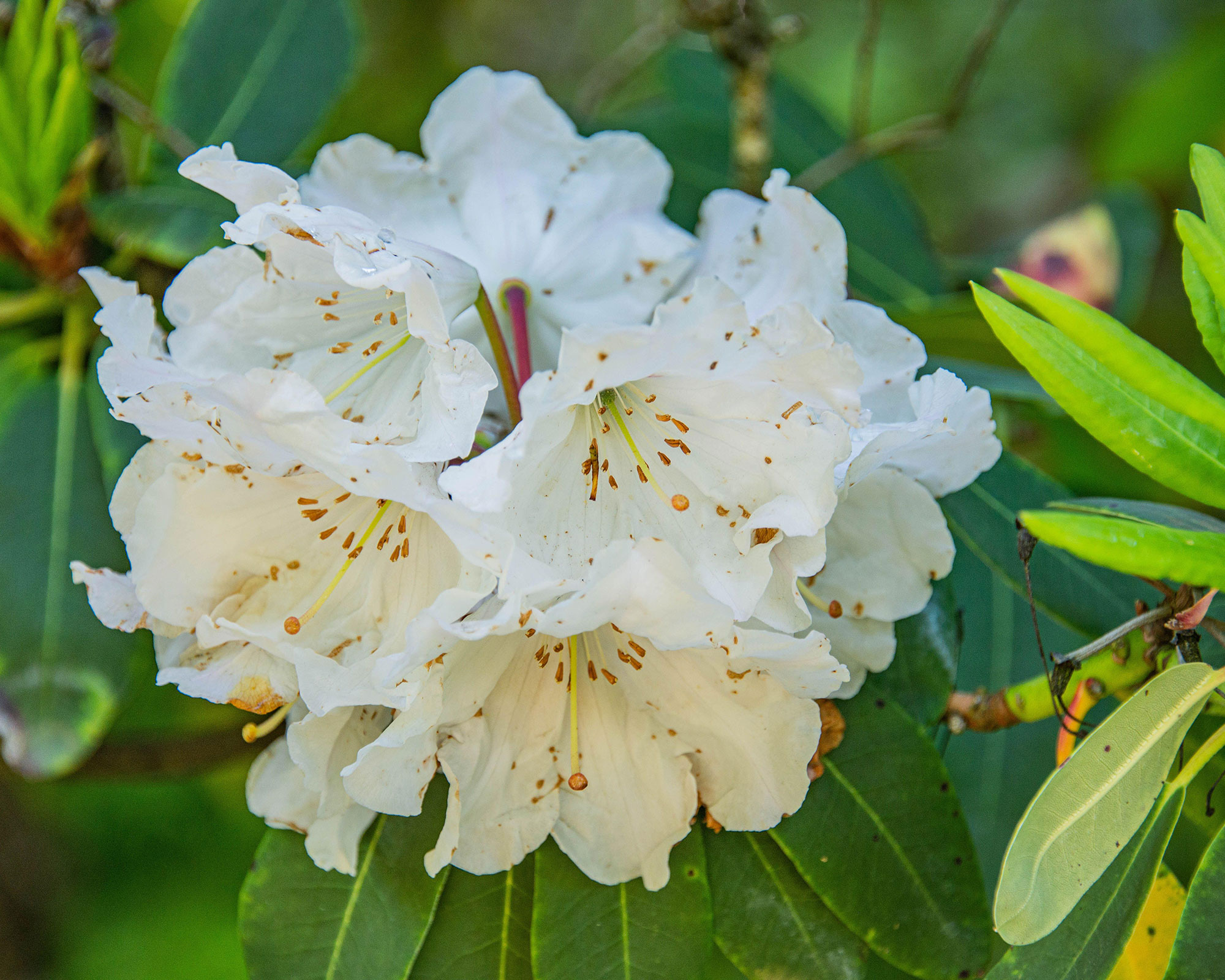
Rhododendron maximum
What is the fastest-growing shrub for a hedge?
Leyland cypress and ‘Green Giant’ arborvitae are often recommended as fast growing hedges but, although they make a screen quickly, they grow so fast that they can be difficult to keep under control.
Forsythia is one of the best hedging plants that grows quickly as it is easy to keep to the required height by pruning immediately after flowering. You can even use a powered hedge trimmer to get the job done quickly and annual trimming will also encourage prolific flowering.
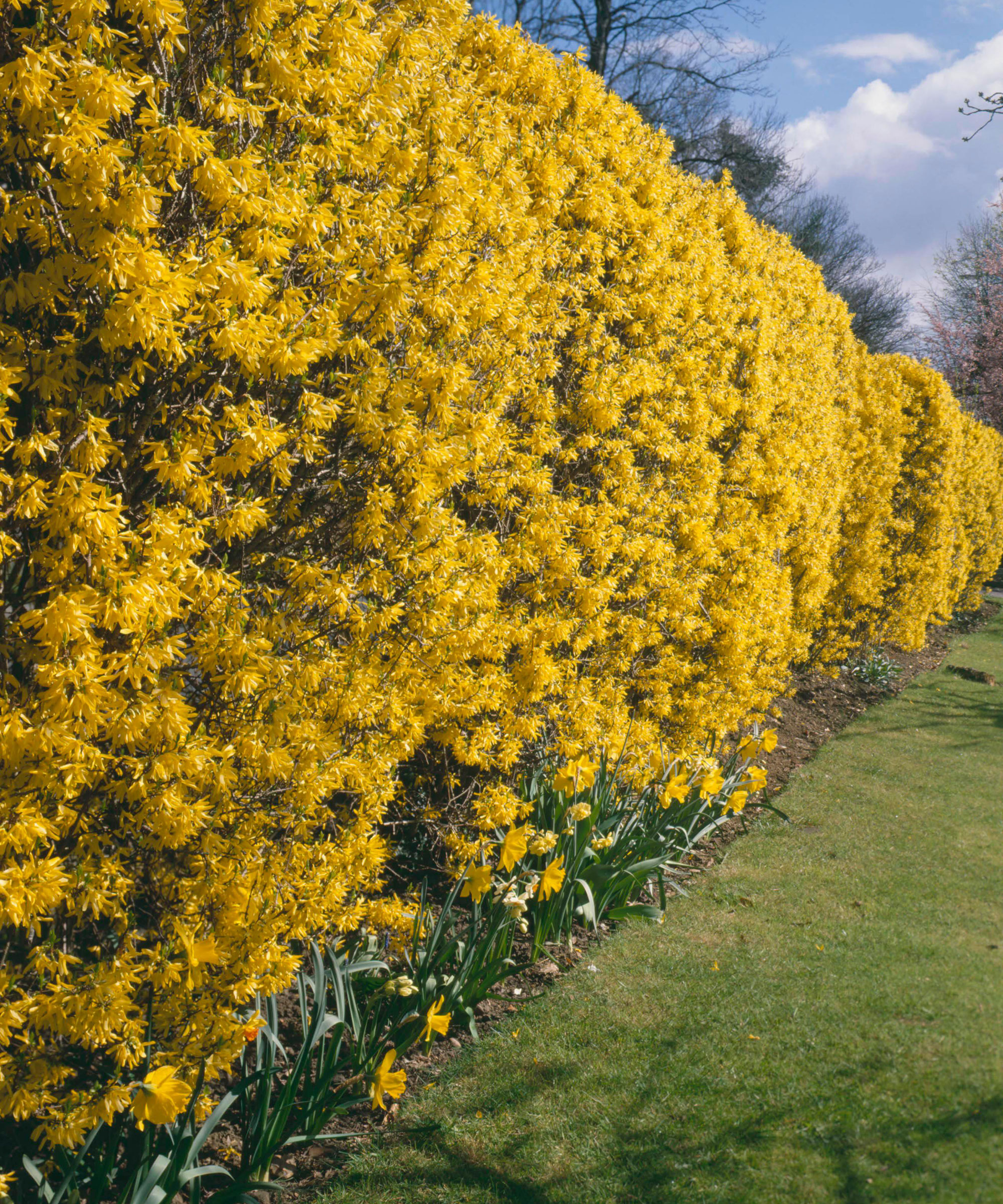

Graham Rice is a garden writer who has won awards for his work online, and in books and magazines, on both sides of the Atlantic. He is a member of a number of Royal Horticultural Society committees and the recipient of the 2021 Garden Media Guild Lifetime Achievement Award.
